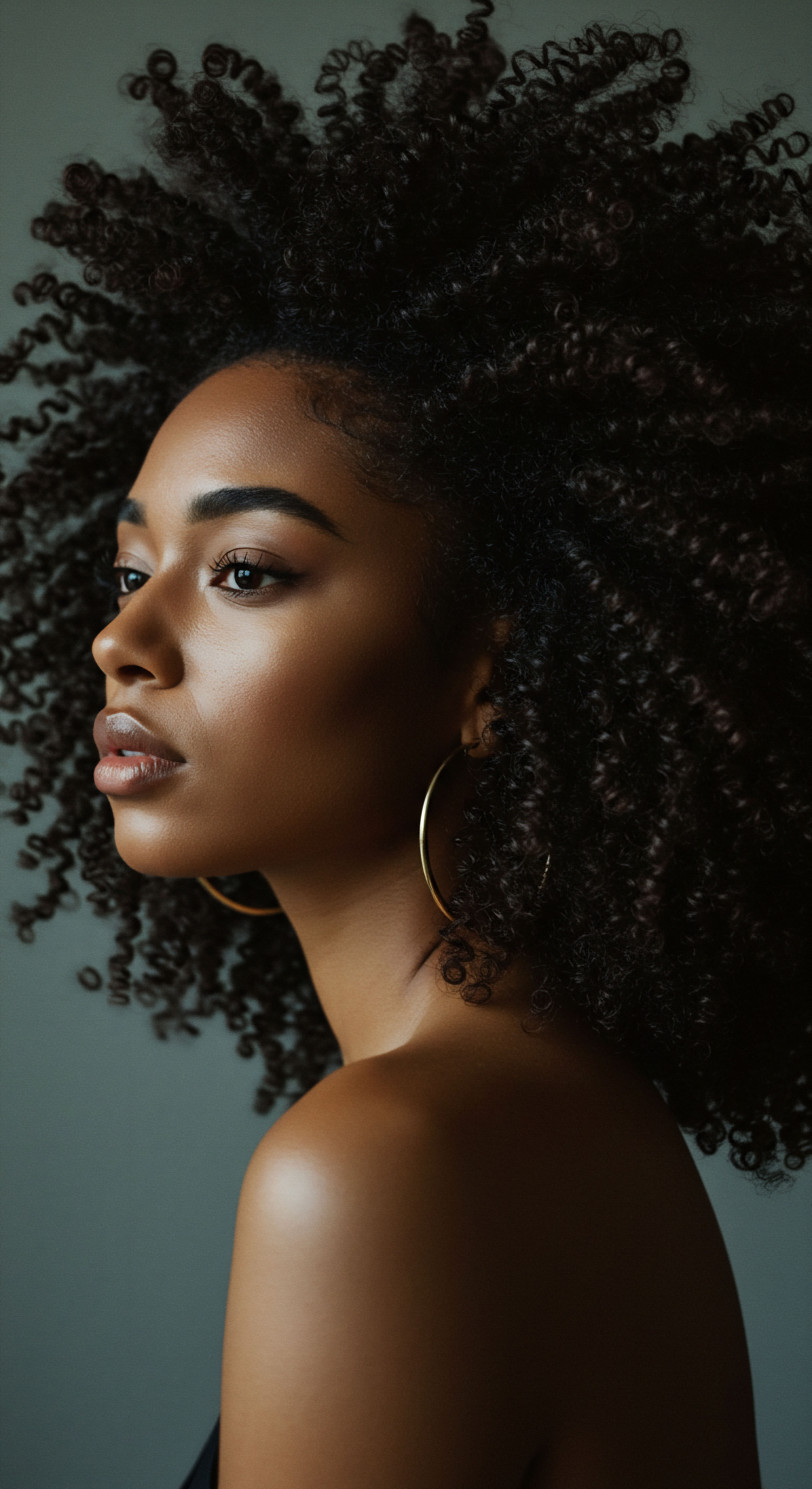
Roots
The strands that crown us, whether tightly coiled, gently waved, or gracefully straight, carry stories. They speak of lineage, of personal journeys, and of the choices we make each morning. Beyond mere adornment, hair holds a profound place in human experience, especially within communities that celebrate textured hair.
As we tend to our crowns, a quiet concern sometimes surfaces ❉ the unseen particles that might accompany our care rituals. This exploration delves into the deep connections between cultural hair practices and the growing desire for hair care free from microplastics, inviting a contemplation of heritage, health, and environmental consciousness.

A Crown’s Deep Significance
Across diverse cultures, hair has served as a powerful communicator, signaling social standing, age, marital status, and even spiritual connections. In many traditional African societies, for instance, hair was far more than a physical attribute; it acted as a living library of identity. Styles could denote a person’s tribe, their wealth, or their role within the community.
Elaborate braiding patterns, intricate twists, and adorned styles were not simply aesthetic choices. They were deliberate expressions, handed down through generations, each curl and plait carrying a message.
The significance extended to rituals surrounding hair, from first haircuts to ceremonial stylings. These practices reinforced communal bonds and a collective identity. The reverence for natural hair textures, before colonial influences introduced alternative beauty standards, was deeply ingrained.
Traditional ingredients—shea butter, various plant oils, herbal rinses—were employed not only for their conditioning properties but also for their perceived spiritual or medicinal benefits. These preparations were derived directly from the earth, their origins transparent, their impact on the wider world benign.
Hair, a personal adornment, carries deep cultural messages, especially within textured hair communities, linking identity to ancient practices.
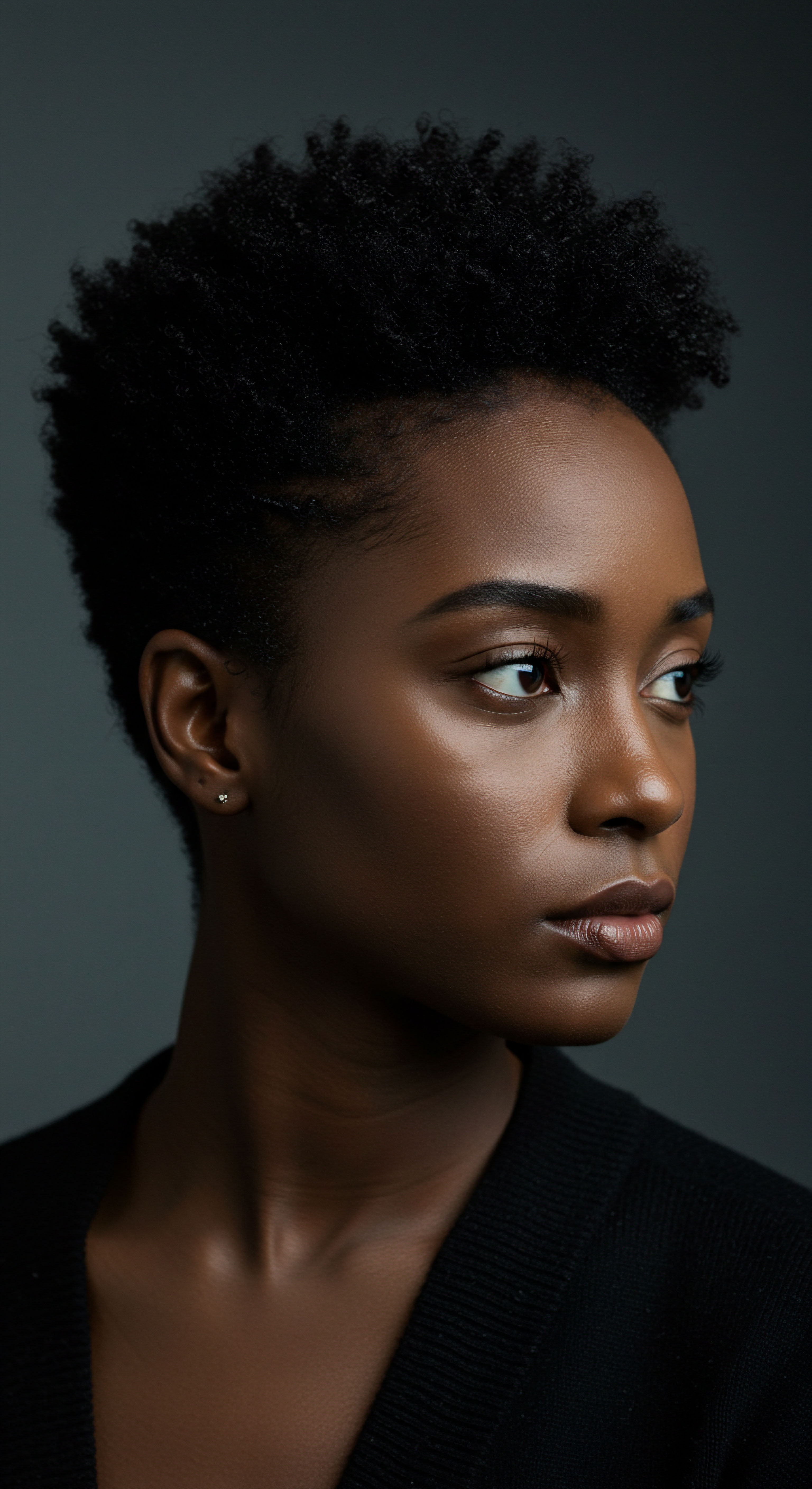
The Unseen Elements in Modern Care
Our modern world, with its rapid innovations, introduced a vast array of synthetic ingredients into hair care products. These formulations promised ease of use, lasting hold, and specific cosmetic effects. Many of these advancements, however, came with a hidden cost ❉ the inclusion of microplastics.
These tiny plastic particles, typically less than five millimeters in size, serve various purposes in products, acting as emulsifiers, film-formers, or abrasives. They might offer a silky feel or contribute to product stability.
The ubiquity of microplastics extends beyond the obvious microbeads once common in exfoliants. They appear in countless “leave-on” formulations, such as conditioners, styling creams, and gels. While rinse-off products gained initial attention for their microplastic content, a growing body of research highlights a significant oversight ❉ the prevalence and environmental impact of microplastics within leave-on items. This area of scientific inquiry remains surprisingly understudied, despite the continuous application and subsequent environmental release of these products.
Consider the polymers often found in hair care ❉ polyethylene, polypropylene, polyacrylates, and silicones. These substances, while providing desired product characteristics, resist natural degradation. Once washed down drains, they enter wastewater systems, where conventional treatment methods often fail to capture them completely.
They persist in aquatic environments, ultimately making their way into oceans, soil, and even the air we breathe. This persistence creates a complex environmental challenge, one that calls for a thoughtful re-evaluation of our daily routines and the ingredients we choose.

Ritual
Stepping into the realm of daily hair care, we confront a landscape shaped by both personal preference and communal wisdom. For those with textured hair, these routines often extend beyond simple cleansing and conditioning; they are rituals, steeped in cultural memory and practical knowledge passed through generations. The choice of what touches the hair, what nurtures it, and what protects it, carries a significance that reaches beyond individual well-being to encompass broader ecological considerations.

What Traditional Hair Care Rituals Can Teach Us?
Across the African diaspora, hair care has always been a practice of profound connection—connection to self, to family, and to ancestral ways. Prior to forced assimilation, traditional African societies used natural elements for hair cleansing, conditioning, and styling. Think of the nourishing qualities of Rhassoul Clay for clarifying, or the moisturizing properties of Baobab Oil and Chebe Powder for strength and growth. These ingredients were locally sourced, biodegradable, and understood within a holistic framework of health and beauty.
These traditional approaches prioritized long-term hair health and scalp vitality over temporary cosmetic effects. They fostered patience and an intimate understanding of one’s own hair texture. The practice of communal hair styling, particularly among women, served as a powerful social glue, a time for sharing stories, wisdom, and laughter.
These were moments when practical skills were transmitted, alongside cultural values of self-care and community support. The products used were often prepared fresh, their composition transparent, leaving no lingering environmental burden.
The return to these ancestral practices today is more than a trend; it represents a conscious reconnection with heritage and a recognition of the inherent goodness in nature’s offerings. It reflects a desire for ingredients that are not only beneficial for the hair but also gentle on the planet. This movement towards microplastic-free hair care is thus deeply intertwined with a cultural reclamation, a re-centering of practices that honor both the individual and the earth.
Daily hair care for textured hair is a ritual, a link to cultural memory and ancestral wisdom, valuing natural ingredients.
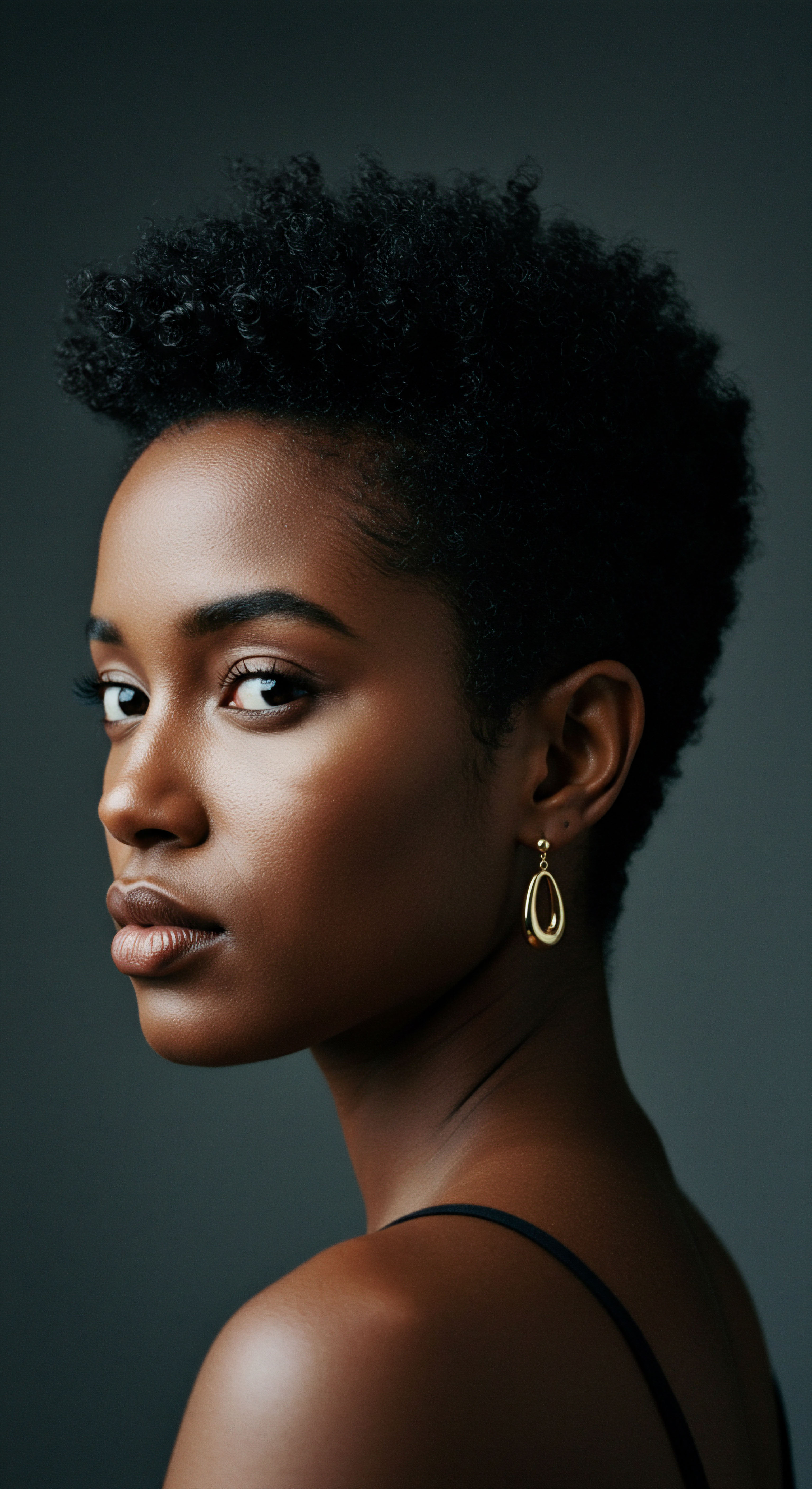
Practical Shifts for a Microplastic-Free Crown
Making the shift to microplastic-free hair practices involves thoughtful product selection and a willingness to explore alternatives. It is a journey of discovery, finding what works best for one’s unique hair while aligning with a broader environmental consciousness. This transition often begins with scrutinizing ingredient labels, learning to identify synthetic polymers that might hide within seemingly innocuous product names.
- Polyethylene ❉ Often found in scrubs or as a film-former.
- Polypropylene ❉ Used for consistency or as an abrasive.
- Acrylates Copolymer ❉ A common film-former in gels and styling products.
- Carbomer ❉ A thickening agent that is a synthetic polymer.
Beyond simply avoiding specific ingredients, embracing microplastic-free care can involve:
- Formulating with Plant-Based Oils ❉ Utilizing natural oils like coconut, jojoba, argan, or castor oil provides deep conditioning and sealing properties without synthetic additives. These oils have been part of traditional hair care across many cultures for centuries.
- Exploring Solid Hair Care Products ❉ Shampoo and conditioner bars often contain fewer synthetic ingredients and reduce plastic packaging, addressing both microplastic content and broader plastic waste.
- Creating Homemade Concoctions ❉ Simple recipes using ingredients like aloe vera, apple cider vinegar, or herbal infusions offer complete control over what touches the hair, ensuring a truly microplastic-free regimen.
The decision to opt for products devoid of microplastics aligns with a broader ethical consideration for the planet. It represents a vote for transparency in manufacturing and a commitment to sustainable beauty. This practical shift in daily routines, while seemingly small, collectively contributes to a healthier environment and a more authentic connection to hair care traditions.
| Product Category Shampoos |
| Typical Function Cleansing, lathering |
| Likelihood of Microplastics Moderate to High (especially liquid polymers) |
| Alternative Approaches Shampoo bars, rhassoul clay, natural saponins |
| Product Category Conditioners |
| Typical Function Detangling, smoothing, moisturizing |
| Likelihood of Microplastics High (film-formers, silicones) |
| Alternative Approaches Natural oils, plant-based emollients, solid conditioners |
| Product Category Styling Gels/Creams |
| Typical Function Hold, definition, frizz control |
| Likelihood of Microplastics High (film-formers, synthetic polymers) |
| Alternative Approaches Flaxseed gel, aloe vera, plant-based styling butters |
| Product Category Leave-in Treatments |
| Typical Function Moisture, protection, softening |
| Likelihood of Microplastics High (synthetic polymers, silicones) |
| Alternative Approaches Hydrating plant hydrosols, natural leave-in creams |
| Product Category This table provides a general guide; always review specific ingredient lists. |
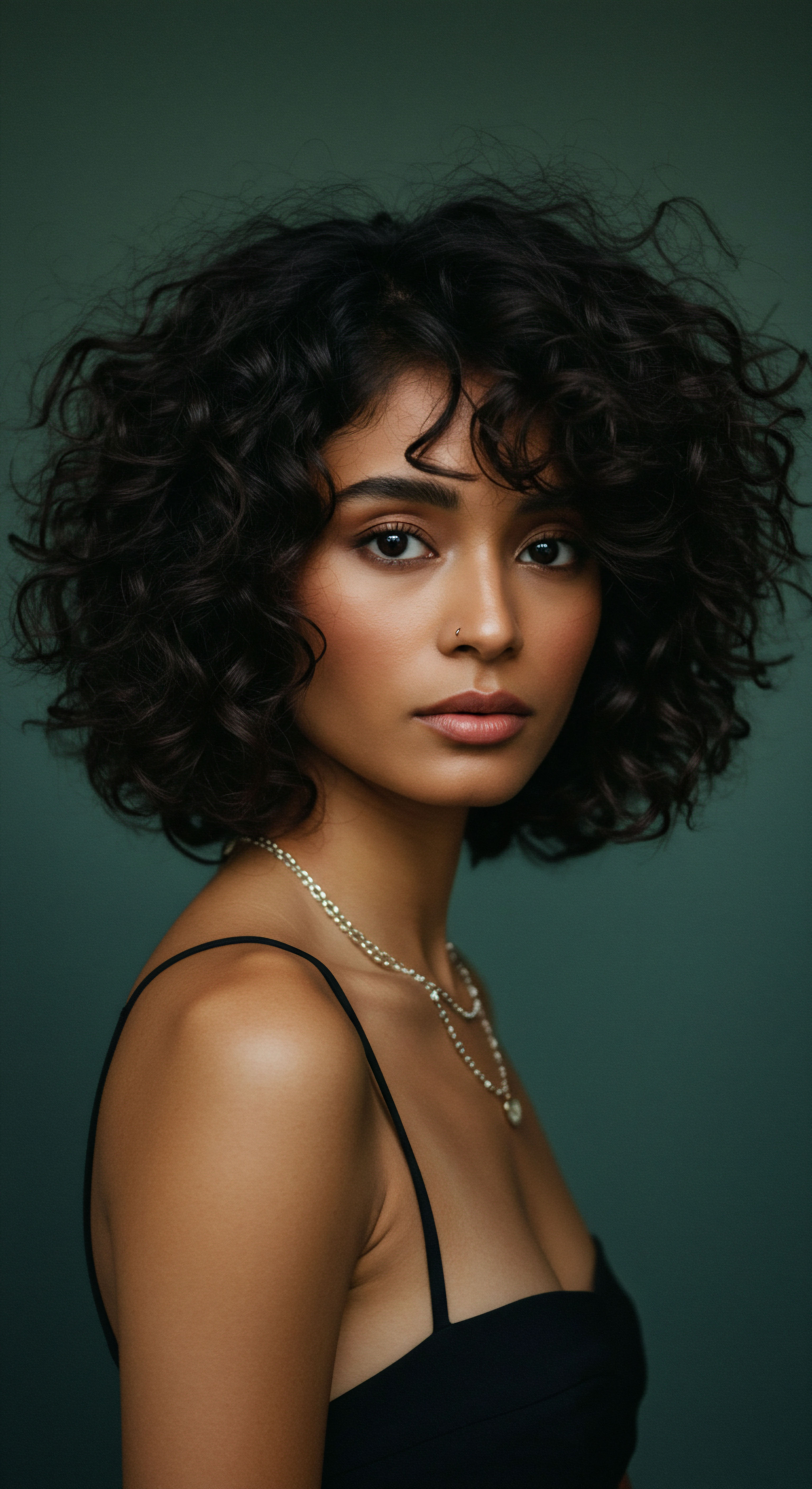
Relay
Our contemplation now deepens, moving beyond the personal and historical to examine the complex interplay of cultural identity, commercial pressures, and environmental justice within the realm of microplastic-free hair practices. The journey towards truly sustainable and culturally affirming hair care is not a simple path; it is a layered exploration that challenges established norms and invites a re-evaluation of societal values.
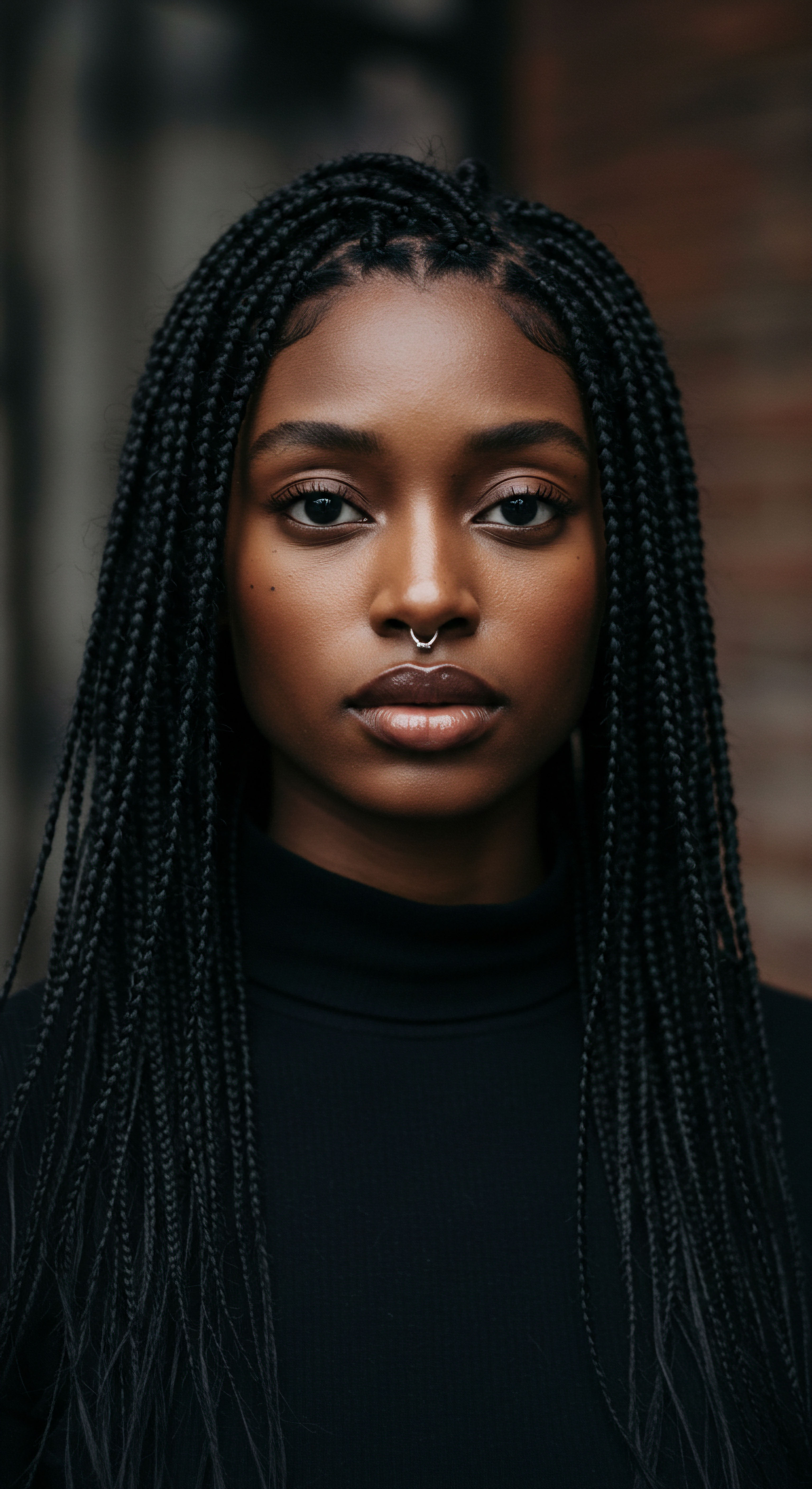
How Do Commercial Pressures Influence Hair Care Choices?
The beauty industry, a colossal global enterprise, has historically played a significant role in shaping perceptions of beauty, often promoting Eurocentric standards that alienated individuals with textured hair. This dynamic led to a reliance on products designed to alter natural hair textures, frequently containing harsh chemicals and, more recently, synthetic polymers. The sheer volume of products available, driven by aggressive marketing, can overshadow the subtle wisdom of traditional practices.
For communities with textured hair, the commercial landscape has presented a unique set of challenges. Products specifically formulated for coily or kinky hair were historically scarce, or they contained ingredients that were damaging in the long term. This scarcity, coupled with societal pressures to conform to straightened hair ideals, meant many were compelled to use products that compromised both hair health and environmental well-being. The rise of the “natural hair movement” represents a powerful counter-narrative, a collective assertion of identity that extends to ingredient consciousness.
However, even within this movement, the commercial influence persists. Many “natural” or “clean” beauty brands still incorporate synthetic polymers, often marketed as beneficial for texture or hold, without full transparency regarding their environmental footprint. This creates a deceptive landscape where consumers, seeking healthier alternatives, might unknowingly continue to contribute to microplastic pollution. The pressure to innovate quickly, to deliver immediate results, can sometimes eclipse the long-term implications of product formulations.

What is the Environmental Cost of Synthetic Hair Extensions?
A particularly poignant example of this complex intersection is the widespread use of synthetic hair extensions and wigs within textured hair communities. These accessories hold immense cultural significance, offering versatility, protection, and a means of self-expression. They can provide a sense of freedom from daily styling demands and allow for a multitude of aesthetic statements. Yet, a rarely discussed environmental concern shadows their popularity.
Synthetic hair, predominantly made from plastic polymers like kanekalon or toyokalon, presents a substantial source of microplastic waste. These fibers, though designed to mimic natural hair, are essentially plastic strands. When these extensions are worn, washed, and ultimately disposed of, they shed microscopic plastic particles. A study published in ACS ES&T Water in 2025 by K.
Abbott highlights this issue, pointing out that the production of synthetic hair is energy-intensive, resulting in considerable carbon emissions. More critically, when these products reach landfills, which is their common end-of-life, the polymers degrade slowly, releasing microplastics into the groundwater and soil.
The scale of this problem is substantial, yet it remains largely unaddressed in mainstream environmental discussions. The very act of choosing a synthetic protective style, while culturally affirming and personally convenient, carries an environmental burden that often goes unrecognized. This data point underscores the need for a deeper conversation, one that acknowledges the cultural context while also seeking innovative, truly biodegradable alternatives for hair extensions. The ethical considerations here are layered ❉ how do we balance cultural expression with environmental responsibility, particularly when historically marginalized communities have fewer truly sustainable options available?
The widespread use of synthetic hair extensions, while culturally significant, contributes to microplastic pollution, a seldom discussed environmental cost.
The challenge extends to the broader category of “leave-on” personal care products, which includes many styling and conditioning products for textured hair. Research indicates a surprising lack of study on microplastic exposure from these products, despite their continuous contact with skin and hair. A 2024 review in the Journal of Hazardous Materials by Kukkola et al.
underscores the urgency of research on microplastics in “leave-on” cosmetic and personal care products, noting that potential health and environmental risks are largely ignored by researchers and regulators. This oversight means that a significant source of microplastic contamination remains poorly understood, both in terms of its environmental fate and its potential health impacts on consumers.
Consider the sheer volume ❉ a 2018 study estimated that Malaysia alone discharges 0.199 trillion microplastics annually from personal care products and cosmetics into the marine environment. While this figure encompasses all personal care products, hair care items contribute a notable portion. The persistent nature of these plastic particles means they remain in the environment for centuries, entering food chains and ecosystems, with long-term consequences that are only beginning to be understood.
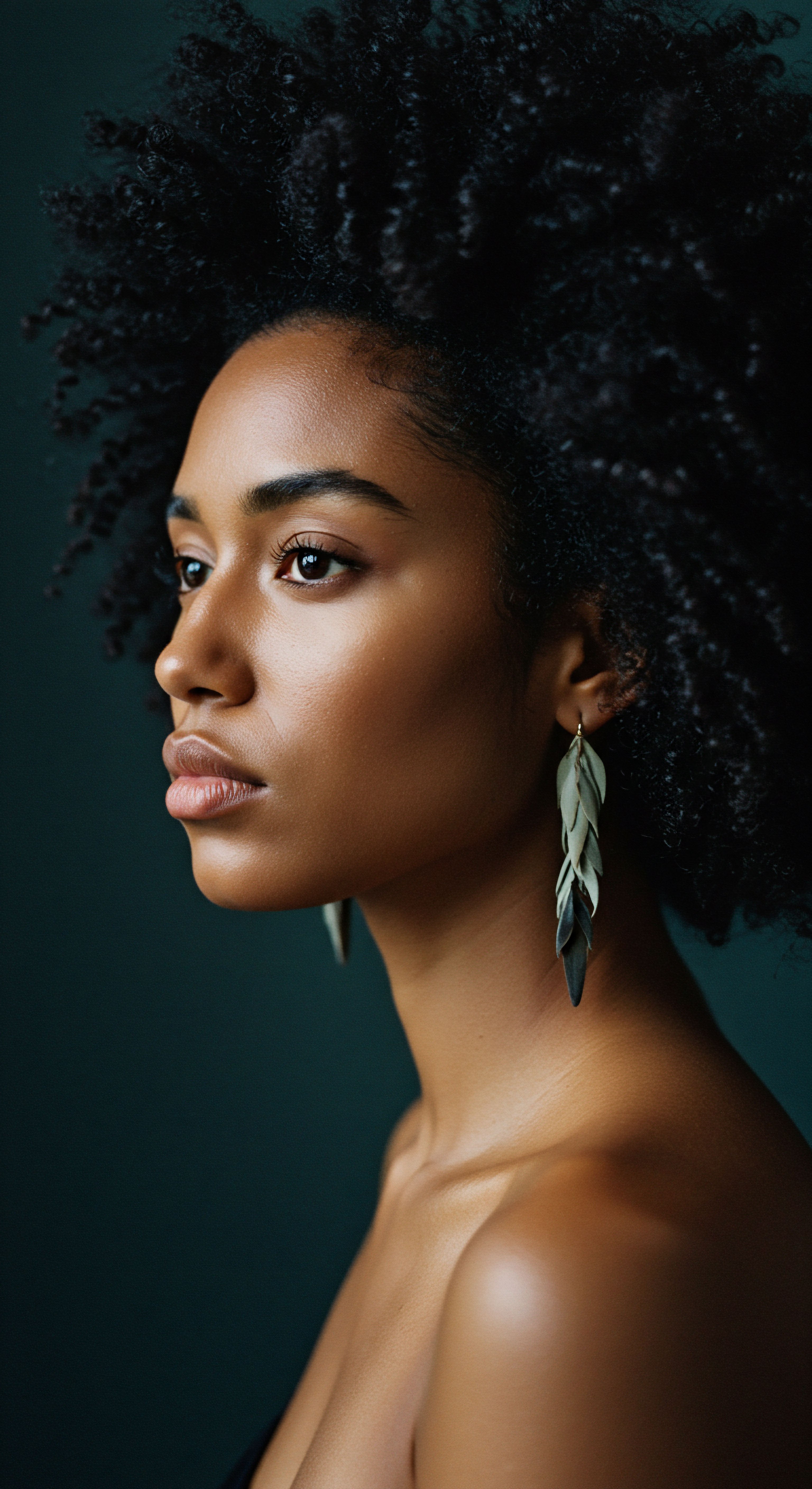
What Does Science Say About Hair Product Microplastics?
The scientific community is increasingly vocal about the pervasive nature of microplastics and nanoplastics, even in unexpected places. A study from the National Institute of Standards and Technology (NIST) in 2022 revealed that common plastic products, when exposed to hot water, release trillions of nanoparticles per liter. While this research focused on food-grade nylon bags and hot beverage cups, the principle of plastic shedding under common use conditions is highly relevant to hair products. The tiny size of nanoplastics, smaller than a micrometer, allows them to potentially bypass traditional filtration systems and even cellular barriers.
The concern with microplastics in hair products extends beyond their physical presence. These particles can adsorb environmental pollutants, acting as carriers for harmful chemicals into organisms. Furthermore, some synthetic polymers used in cosmetics, even those considered water-soluble, are poorly biodegradable and can pose similar environmental risks to solid microplastics. The complexity of these formulations makes it challenging to assess their full ecological footprint.
The call from the scientific community is clear ❉ greater transparency, more rigorous testing, and a shift towards truly biodegradable alternatives are needed. This scientific understanding supports the cultural movement towards microplastic-free hair care, providing a grounded basis for the choices individuals are making to protect both their personal health and the wider environment.
| Source Category "Rinse-off" Cosmetics |
| Examples Exfoliating scrubs, some cleansers |
| Environmental Pathway Wastewater systems, direct aquatic release |
| Relevant Research Note Initial focus of microplastic bans, but only part of the problem. |
| Source Category "Leave-on" Cosmetics |
| Examples Conditioners, gels, lotions, sunscreens |
| Environmental Pathway Wastewater, skin/hair shedding, atmospheric release |
| Relevant Research Note Significantly understudied; direct skin exposure effects largely unknown. |
| Source Category Synthetic Hair Products |
| Examples Wigs, extensions, braids (kanekalon, toyokalon) |
| Environmental Pathway Landfills, shedding into air/water during use |
| Relevant Research Note Degrade slowly, releasing microplastics into soil and water; complex recycling. |
| Source Category Plastic Packaging |
| Examples Bottles, tubes, jars |
| Environmental Pathway Fragmentation into secondary microplastics, leaching |
| Relevant Research Note Can shed secondary microplastics into products and environment. |
| Source Category Microplastics persist for centuries, impacting ecosystems and potentially human health. |
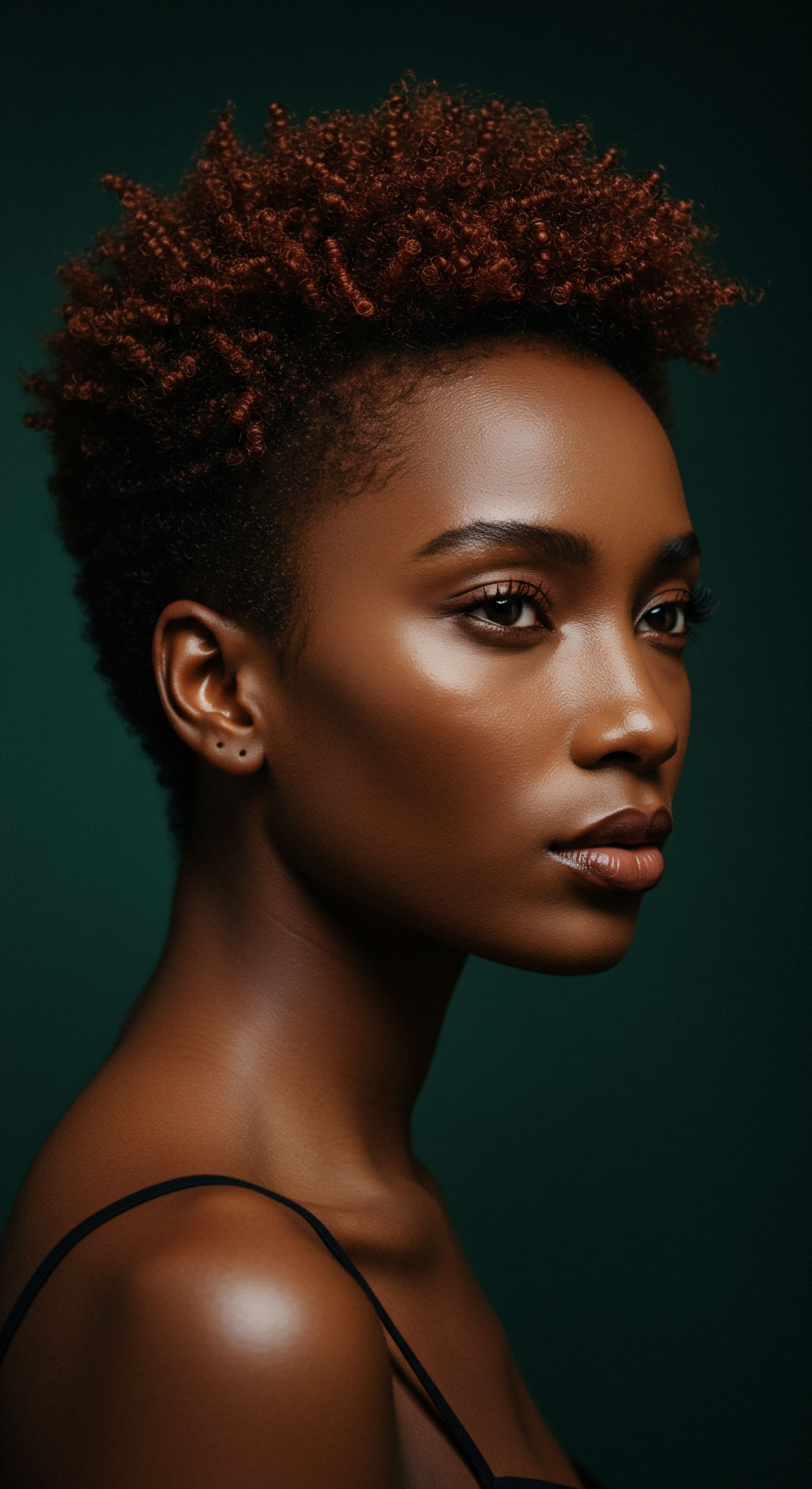
Reflection
As we close this thoughtful exploration, the intricate connections between cultural hair practices and the pursuit of microplastic-free care stand in clear relief. This is not merely a discussion of ingredients or environmental impact; it is a conversation about respect—respect for heritage, for our bodies, and for the living world that sustains us. The path towards hair practices that are truly gentle, both for our strands and for the planet, invites a deeper consideration of our choices, moving us towards a future where beauty and well-being are in genuine accord. The echoes of ancestral wisdom, paired with the quiet insights of science, beckon us towards a more conscious way of tending to our crowns.
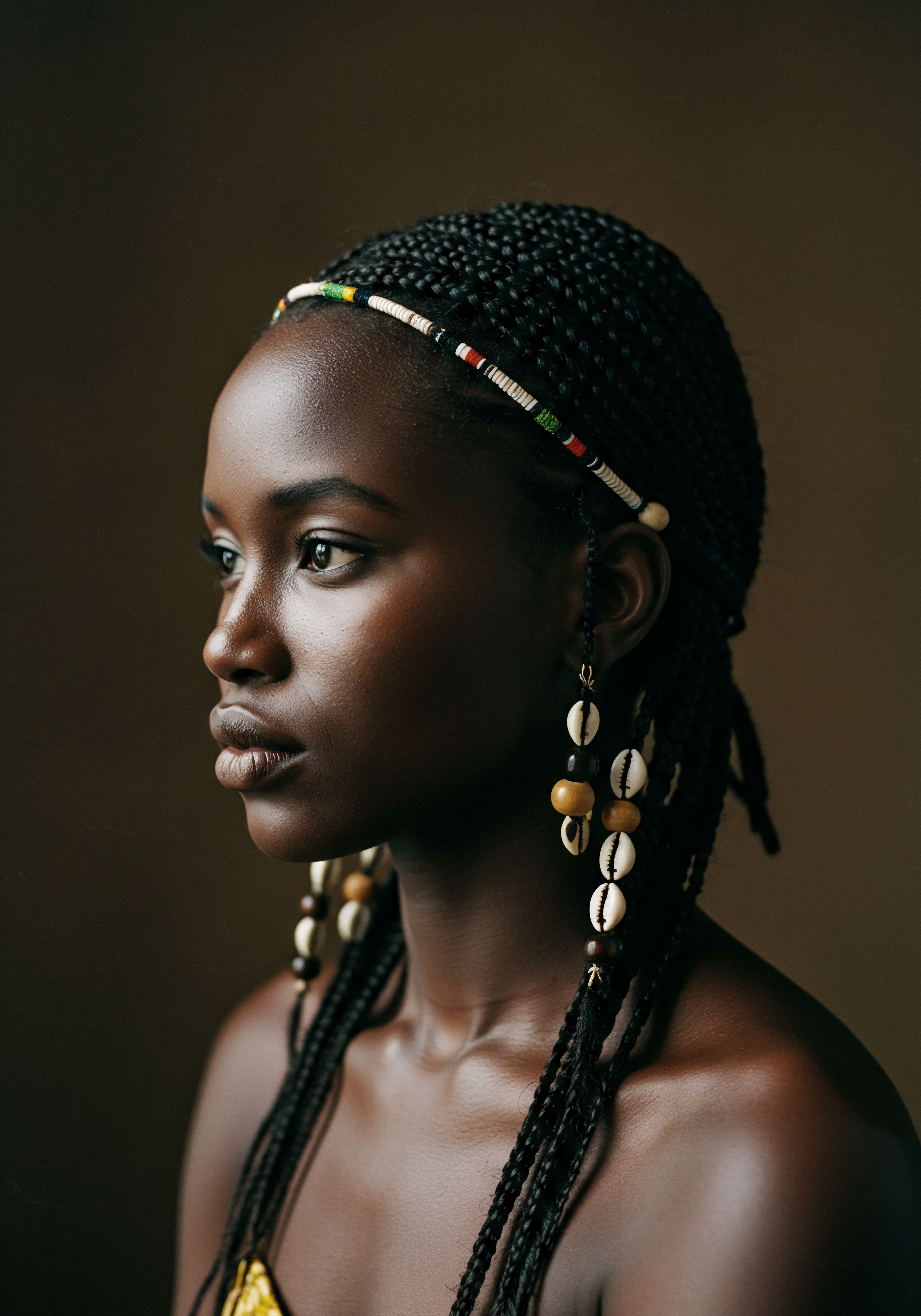
References
- Abbott, K. (2025). Environmental Consequences of Synthetic Hair Use from a Black British Perspective (and some eco-friendly alternatives). ACS ES&T Water .
- Bashir, S. M. Kimiko, S. Mak, C. W. Fang, J. K. H. & Gonçalves, D. (2021). Personal Care and Cosmetic Products as a Potential Source of Environmental Contamination by Microplastics in a Densely Populated Asian City. Frontiers in Marine Science, 8.
- Byrd, A. D. & Tharps, L. L. (2002). Hair Story ❉ Untangling the Roots of Black Hair in America. St. Martin’s Press.
- Dabiri, E. (2019). Twisted ❉ The Tangled History of Black Hair Culture. HarperCollins.
- Gamage, S. & Mahagamage, Y. (2022). Microplastics in personal care products and cosmetics in Sri Lanka. Environmental Science and Pollution Research, 29(45), 68268-68277.
- Kukkola, A. Thompson, R. C. & Lynch, J. M. (2024). Beyond microbeads ❉ Examining the role of cosmetics in microplastic pollution and spotlighting unanswered questions. Journal of Hazardous Materials .
- Praveena, S. M. et al. (2018). Exploration of microplastics from personal care and cosmetic products and its estimated emissions to marine environment ❉ An evidence from Malaysia. Marine Pollution Bulletin, 137, 57-65.
- Wong, N. Williams, K. Tolliver, S. & Potts, G. (2025). Historical Perspectives on Hair Care and Common Styling Practices in Black Women. MDedge, 2025(March).
- Zangmeister, C. et al. (2022). Everyday Plastic Products Release Trillions of Microscopic Particles Into Water. Environmental Science and Technology .